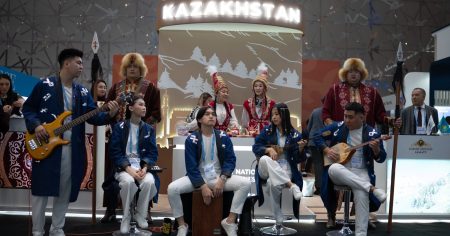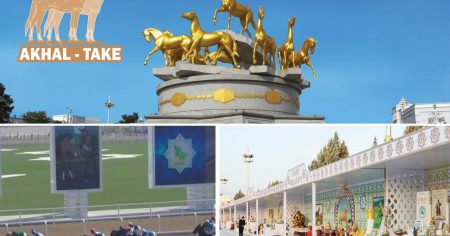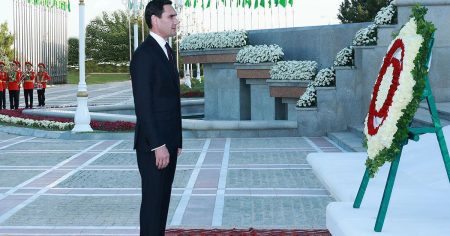«Welcome to Baku!» my editor-in-chief, Rafael Nektalov, said with a wide grin as we touched down at Heydar Aliyev International Airport. As soon as we deplaned, we — I, Rafael, and documentary filmmaker Ariel Roubinoff — were met with a woman holding a sign with our names, who then took us through a special exit to a VIP shuttle that took us to a VIP terminal.
It’s my first time in Azerbaijan—and Rafael’s 6th visit in the last 12 months. «When you’re the guest of the government, it’s nice,» he said as we settled into the leather seats of the vehicle. We’re part of a Delegation of Bukharian Jews who have been invited back to Azerbaijan (following a successful World Congress) for a week-long trip, visiting not only Baku, but also the all-Jewish town in Guba, and the recently «liberated» territories in Nagorno-Karabakh.

Upon arriving in Baku, we were taken first to our hotel, where we briefly rested, before going sightseeing with Zaur Salmanov, from the Azerbaijani committee that works with the diaspora. Our first stop was the Alley of the Martyrs, an incredible memorial complex dedicated to all the lives lost in the Nagorno-Karabakh war (a 30+ year conflict with Armenia that came to an end this fall) and Black January, a violent crackdown on Azerbaijani nationalism and anti-Soviet sentiment in Baku in January 1990, during the fall of the Soviet Union. 15,000 are buried here, the unnamed ones in a mass grave. We stopped by a known Gorsky Jew, Aqarunov Albert Aqarunovic (1969-1992), who fought in the Nagorno-Karabakh conflict. We left him red carnations on his gravestone.

A beautiful eternal flame burns at the end of the alley, with soul-soothing views of the Caspian Sea.
We left there for the old town, which, as documentary filmmaker Ariel Roubinoff pointed out, «Looks a lot like Jerusalem.» It’s the pale-colored stone, combined with the cats, and Mediterranean-looking trees. There’s also a stone fortress that wraps the old town, which reminds me of Roman towns in Europe, more so than the fortress that encircles Bukhara. We visited the Shrivanshahs’ Palace, now a museum, walked by the 12th-century Maiden Tower (we were too jetlagged to climb all the flights of stairs), and around an exhibit of carved stones on the site adjacent to a former Zoroastrian temple. Afterwards, we left for the Carpet Museum.

The Carpet Museum is inside a cylinder-shaped building meant to resemble a furled carpet. It was, according to our guide, the first carpet museum in the world! Azerbaijanis pride themselves in making the world’s finest carpets, which they claim far surpass Persian carpets. (Who knew? Not me!) Our guide explained how various motifs carried different meanings, and how, before getting married, a typical question typically posed to women was: «Can you weave a carpet?» (If only it were as easy as cooking dinner…)
Tomorrow, we be joined by businessman and Bukharian Jewish Community Center President Leon Nektalov, and Beni Benjamini. Together, we’ll meet with the State Committee on Work with Diaspora, organizers of our trip, before continuing onto the rest of the interary.
Photo by Zaur Salmanov
I’ll be writing more about our week-long visit in the next English issue, which will be in 2 weeks (issue #1164).
By Erin Levi
Bukhariantimes.org





























